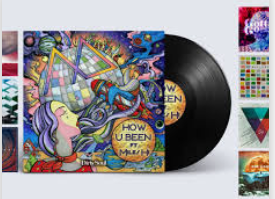Official 34 - lecture 4
listen to part of discussion in a business management class.
last week were talking about innovation in business, remember the graph I showed you?
the curve that looked sorta of like the letter S?
right, let's take another look.
do you recall how this S-curve represents the life cycle of innovation?
sure, starting on the left, the new innovation, let's say it's a new product, almost nobody has heard of it, or at least nobody take it seriously.
then its popularity increases, slowly at first, till sales really start accelerating quickly, there where the line goes up steeply in the middle, as more and more people get excited about the product and they go out and buy it.
but eventually moving over to the right side there, interests began to fade and growth in sales levels off.
level off: stabilize, to approach or reach a steady rate, volume, or amount.
at which point, the market has matured for the product. We can still sell it, and even marginally improve it.
marginal: margin or border; not of central importance.
but it's not new anymore, it no long offer exciting growth opportunities.
So a business leader might face a choice, either stick with this old, safe, proven idea ... or move on to the next big idea, a fresh innovation.
but innovations are risky, they may succeed or they may not.
I've heard your Thursday night program on the campus radio station. You like jazz, right?

yeah, sure.
OK, stay with me here. On your program last week, I heard an old Miles Davis album. Tell us about that.
album: the black album
Miles Davis, trumpet. I played a CD of a jazz classic he recorded in the 1950s, called Kind of Blue. It's my all-time favorite jazz recording.
trumpet
Would you call that recording innovative--for its time?
Absolutely, Nothing at all like what he'd recorded up till then. before that, Miles Davis played thing complex that, nobody could touch him. But this was something totally new.
Suddenly his playing sounded so ... amazingly simple.
how did people react to this new sound of Miles Davis.
some were disappointed even angry that he'd abandoned his old style. But soon, most of his fans came around, and this new style appealed to a whole new group of jazz listeners.
appeal:
v. to arouse a sympathetic response. An idea that appeals to him.
n. a request to the public for money, information or help. They are launching an appeal to raise money.
I guess so! Kind of Blue became the most commercially successful album in the history of jazz. So is there a lesson here, anyone? Think of that S-curve I showed you.
so his old style of jazz was actually a kind of product, one that'd been developed pretty thoroughly... and he'd taken it about as far as he could.
so he decided to take big risk to try something totally new.
Exactly. Something completely fresh and "cool" ... and people couldn't get enough of it. It was a brand new beginning that left lots of room for further development, artistically.
and as a market analyst, you could say that with Kind of Blue, he was jumping to the beginning of a brand new S-curve, with all the potential for profitable development still ahead of him.
But let me ask you something else. This isn't just the music of a single performer, is it, George?
Hardly. More like a group of all-stars. Along with Miles Davis on trumpet, there's Bill Evans on piano, John Coltrane on tenor saxophone
Individually, perhaps the best in the business. But thinking of Miles Davis as the leader of this group, how did he organize and manage all this incredible talent.
He'd lay out the general outline, the theme, and then give each of these star performers, one by one.
the creative freedom to really show that they could do with it on their own instrument to improvise and add something new, but always within the same general theme.
improvise: to invent or make something, such as a speech or a device, at the time when it is needed without already having planned it.
Miles Davis gets credits for recruiting the best jazz talents anywhere, and getting them to collaborate on a fantastic musical product.
everyone see the business parallels here? Any give each of these musicians credit for seizing the opportunity and creating great individual performances.
but good jazz is more than just outstanding individual performances, isn't it?
definitely, Jazz musicians need to listen to each other and go with the flow. Like, one time, somebody goofed and came in a little early.
goof: to make a silly mistake.
but everyone else adjusted and went right along with it, as if nothing were wrong, and this mistake came out like... just another unexpected creative interpretation.
interpretation: an explanation or opinion of what something means.
thanks, great insights, ones that would certainly apply to what we've studying here.

